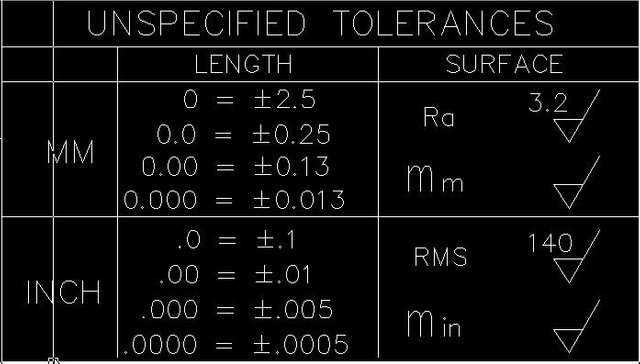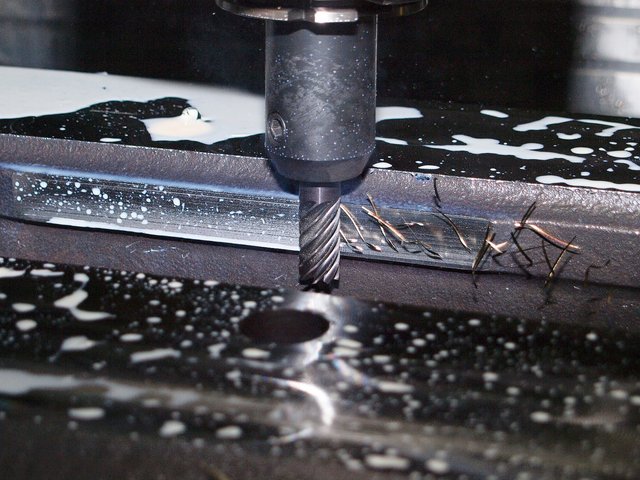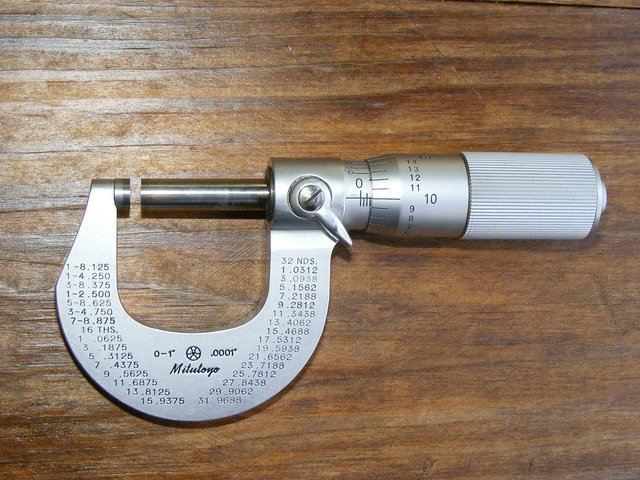An Appeal to Tolerance!
When designing any manufactured object, it is necessary to specify tolerances. A proper drawing of a part describes something that is geometrically perfect, whether done with ink on paper or digital bits in CAD software. As such, it is also completely impossible to manufacture. An allowance must be made for the limits of human ability and the imperfect nature of real-world conditions. Tolerance specifications in a plan declare exactly how imperfect a part can be. Higher precision is more expensive, but may be necessary for certain design parameters. Unnecessarily high tolerances increase costs dramatically with no practical benefit. In a good company, there is collaboration between the design and manufacturing teams to ensure both sides are working together to find the right balance.

Image credit
Standard practice in mechanical design is to have a boilerplate tolerance specification in the title block on each page, and then specify any different requirements in the dimensions on the plans themselves. Whether imperial or metric units are in use, the number of decimal places is used to specify the required precision in manufacturing. If the plans say ".500," it means greater precision than if it says ".50," even though mathematically the numbers are equivalent.
A more complex system called Geometric Dimensioning and Tolerancing, or GD&T for short, is becoming more common. It has a library of symbols and standards to specify the location of features, surface finishes, and more using specific features or surfaces as datum points from which other elements are located. I am a bit rusty on using this method now, but it has advantages when used well because it can increase the precision of the dimensions that matter most without increasing overall manufacturing complexity. When poorly used, it is of course a nightmare for everyone involved.

Image credit
On the manufacturing side, even with CNC machines that automate a large portion of the manufacturing process, a good machinist who can optimize toolpaths and order of operations is far more important than the layman may realize. Skill and experience mean more easily achieving a given production rate while meeting tolerance requirements. Never look down on anyone in the blue-collar skilled trades, by the way. Those who have made a career for themselves are generally quite brilliant, and may well make more per hour than someone with a white-collar office job drafting the plans for what they make. Think about that if you're choosing a career path. If you like making stuff and solving problems, the trades might be a great opportunity, and it could entirely avoid student loan debt to boot!

Image credit
During production, precision measurements are taken to ensure manufacturing is meeting the design specifications. Calipers, micrometers, and special gauges are used to test samples from production runs, or sometimes even every single piece. Many manufacturing firms have specialists whose daily duty is quality controland part inspection.
Remember when I said higher tolerances were more expensive to manufacture? Well, that is why Harbor Freight should not be your source for precision measuring tools. Their calipers are fine for ballpark measurement, but I need to eventually buy good tools from Starrett or Mitutoyo if I return to more design and manufacturing work. The saying goes, "a poor craftsman blames his tools," but poor tools can betray a competent craftsman. Don't cheap out when it comes to the means for your livelihood.
Was any of this helpful? Many libraries have engineering textbooks and machinist's handbooks if you want to learn more. Whether you are interested in aerospace engineering or home carpentry, an understanding of how to set, meet, and verify tolerances will serve you well.
I can only glean the most surface of information here, but I... really admire smart people like you who are trying to break down concepts for lay people :D
If nothing else, I hope it makes you aware that design and manufacturing are more complicated than they seem at a glance.
This post was shared in the Curation Collective Discord community for curators, and upvoted and resteemed by the @c-squared community account after manual review.
@c-squared runs a community witness. Please consider using one of your witness votes on us here
This post has been voted on by the SteemSTEM curation team and voting trail. It is elligible for support from @curie.
If you appreciate the work we are doing, then consider supporting our witness stem.witness. Additional witness support to the curie witness would be appreciated as well.
For additional information please join us on the SteemSTEM discord and to get to know the rest of the community!
Please consider setting @steemstem as a beneficiary to your post to get a stronger support.
Please consider using the steemstem.io app to get a stronger support.
So many people run screaming from GD&T because it is impossible to explain in a classroom, and also impossible to verify with conventional measuring instruments. GD&T was made for use with a coordinate measuring machine (CMM), so unless you're using one (as I did at my last job), the system makes no sense.
I think it was well explained in my class, but we had a semester class devoted to it, and practical CAD exercises to renforce it in our Solidworks classes. And yes, verification of GD&T dimensions in finished parts requires at the very least extra setup and equipment to support conventional tools. And it is a lot of extra work. CMM would be a likely investment for a firm using GD&T anyway through.